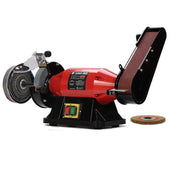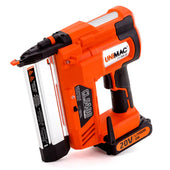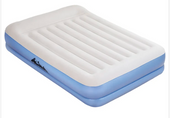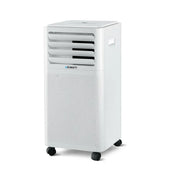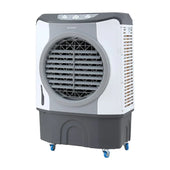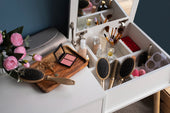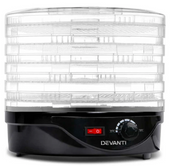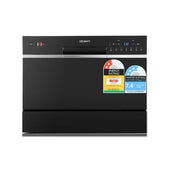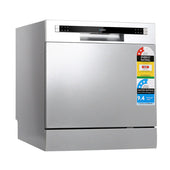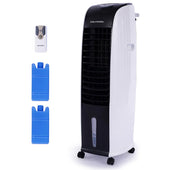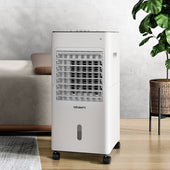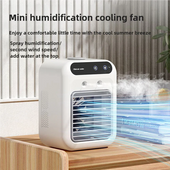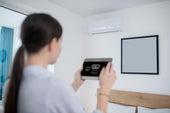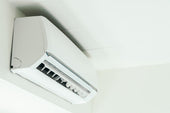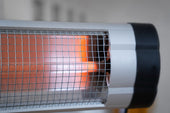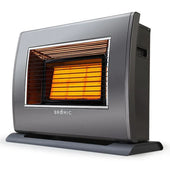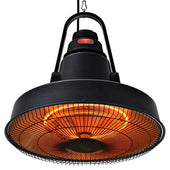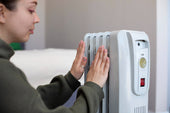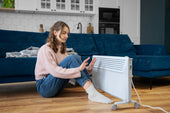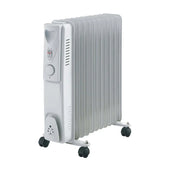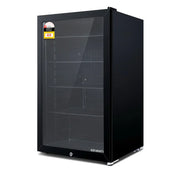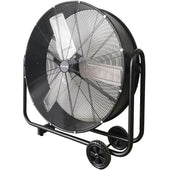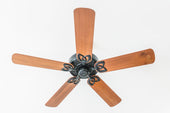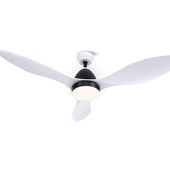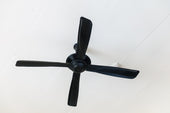Understanding the Construction of Your Massage Chair
A thorough understanding of the construction of a massage chair empowers owners to ensure proper care and maintenance. Each chair typically comprises key components, including:
- Frame: Often built from durable materials like steel or reinforced plastic, the frame provides structural support.
- Cushioning and Upholstery: High-quality foam and synthetic or genuine leather cover the chair, adding comfort and aesthetics.
- Mechanical Components: Motors, rollers, and air pumps drive the massage functions. These are critical to its performance.
- Electronic Systems: A control panel, sensors, and wiring are essential for customised operation and safety.
Attention to these parts assists in troubleshooting and preventing issues, ensuring longevity with proper upkeep.
The Importance of Regular Cleaning and Maintenance
Regular cleaning and maintenance are crucial for preserving a massage chair's performance and longevity. Dust and debris can accumulate During Days in hard-to-reach areas, potentially impairing delicate components. Wiping down the chair’s upholstery with a soft cloth and mild detergent helps prevent stains and prolongs its material quality.
Maintaining the internal mechanisms involves checking for loose screws, ensuring cables remain untangled, and lubricating moving parts as per the manufacturer’s guidance. Frequent maintenance ensures the chair operates smoothly and its features function as intended.
Establishing a consistent care routine minimises wear and tear, helping users avoid costly repairs or replacements over time.
How to Properly Use Your Massage Chair to Prevent Wear
To maximise the lifespan of a massage chair, proper usage is essential. Always start by reading the manufacturer's user manual to familiarise yourself with the chair's features and operational guidelines. Avoid placing the chair in direct sunlight or areas with excessive humidity, as these conditions can deteriorate the upholstery and internal components over time.
Use the chair within its recommended weight limits to prevent unnecessary strain on the motors. Make sure to place the chair on a flat and stable surface to reduce vibrations that can wear down its base.
Limit continuous use to the suggested session durations, typically 15–30 minutes. Lastly, keep sharp objects, food, and drinks away to prevent accidental damage.
Avoiding Common Mistakes That Can Reduce Your Chair's Lifespan
Proper care and usage practices are essential for maximising a massage chair's lifespan. Misuse often accelerates wear and leads to early damage. Below are common mistakes to avoid:
- Overloading the Chair: Exceeding the weight capacity places unnecessary stress on the motor and structural components. Always refer to the user manual for weight limits.
- Improper Placement: Placing the chair in a damp or overly sunny location can lead to material degradation and electronic malfunctions. Opt for a cool, dry space away from direct sunlight.
- Neglecting Regular Cleaning: Dust and debris accumulate quickly in the moving parts, impacting performance. Regularly clean using manufacturer-recommended methods.
- Skipping Maintenance Checks: Scheduling routine inspections ensures worn-out parts are replaced promptly, preventing further issues.
Attention to these details extends the chair's usability while preventing unnecessary repairs or replacements.
Optimal Placement: Where and How to Position Your Massage Chair
Proper placement of a massage chair is crucial for ensuring its longevity and optimal use. Start by selecting a level surface to avoid undue stress on the chair's frame and mechanisms. Position it in a well-ventilated area, away from direct sunlight, as prolonged exposure can lead to fading or damage to the upholstery.
Ensure there is sufficient clearance—typically 6-12 inches—behind and around the chair to allow it to fully recline without obstruction. Avoid placing it near heat sources like radiators or fireplaces, which may warp its components. Use a surge protector to shield the electronics from power surges. Additionally, a low-traffic area will minimise accidental bumps or spills.
Inspecting Electronic Components for Longevity
Regular checks of a massage chair’s electronic components are crucial for maintaining its durability. Users should begin by visually inspecting the power cord for frays or damage to prevent electrical hazards. Paying attention to connections and plugs ensures they remain securely in place and free of dust or corrosion.
Monitoring the control panel or remote for responsiveness helps detect potential malfunctions early. Internal wiring, if accessible, should be examined for signs of wear. Furthermore, checking for unusual noises or overheating during use is essential, as these may indicate a failing motor or circuit board. Prioritising these inspections aids in preventing costly repairs.
When and How to Replace Worn-Out Parts
Proper maintenance includes recognising when components of a massage chair need replacing. Common parts requiring attention include rollers, upholstery, motors, and remote controls. Identifying signs like unusual noise, reduced massage quality, or visible wear helps determine replacement timing.
- Inspect Regularly: Conduct monthly checks for frayed wires, cracks, or damaged upholstery. Early detection avoids costly repairs.
- Order Compatible Parts: Always refer to the manufacturer’s guidelines to ensure compatibility when purchasing replacements.
- Follow Instructions: Most user manuals provide step-by-step guidance. If unavailable, consider contacting the manufacturer or professional services.
Delayed action on worn parts may lead to further damage, shortening the chair’s lifespan.
Tips for Protecting Your Massage Chair's Upholstery
Proper care of a massage chair's upholstery is essential for maintaining its aesthetic and functional integrity. Begin by placing the chair in a low-sunlight area, as prolonged exposure to direct sunlight can lead to fading or cracking. Using covers or specialised protective sheets can shield the upholstery from spills, dirt, or oils. Regular cleaning is important; ensure to use mild cleaning solutions suited for the material—whether leather, synthetic, or fabric. It’s advisable to avoid sharp objects, jewellery, or clothing embellishments that might scratch or tear the surface. Always follow the manufacturer’s care instructions for optimal results.
Seasonal Maintenance: Keeping Your Chair in Top Shape Year-Round
Regular seasonal maintenance helps ensure a massage chair remains in optimal working condition throughout the year. Begin each season by inspecting the chair’s upholstery for cracks, wear, or fading, as temperature and humidity changes can impact its material. Dust or vacuum the chair weekly, paying special attention to crevices and moving parts.
During colder months, prevent stiffening of components by placing the chair in a temperature-controlled room. In humid seasons, use a dehumidifier to avoid moisture damage. Lubricate mechanical joints biannually, particularly before summer and winter, to maintain smooth operation. Address any emerging issues promptly to avoid compounding problems.
The Role of Professional Servicing in Prolonging Your Chair's Life
Regular professional servicing ensures your massage chair remains in optimal condition. Certified technicians evaluate internal components, such as motors, gears, and heating elements, identifying issues that might not be visible to casual observation. They also clean internal parts, remove debris, and lubricate moving mechanisms to prevent premature wear.
Technicians can update the software in advanced models, keeping functionality current. Scheduled maintenance often spots minor issues before they escalate into costly repairs, safeguarding long-term performance. Moreover, professional servicing ensures compliance with warranty requirements, which many manufacturers mandate for continued coverage.
Routine check-ups by specialists, therefore, play a preventative role, enhancing durability and reliability significantly.
Storage Tips for When Your Massage Chair is Not in Use
Proper storage practices can significantly preserve the functionality and appearance of a massage chair.
- Choose an ideal location: Position the chair in a clean, dry space away from direct sunlight, heat sources, and humidity, which can cause material damage or degrade electronic components.
- Cover the chair: Use a breathable cover to prevent dust accumulation and protect the upholstery. Avoid plastic covers that can trap moisture and lead to mould growth.
- Maintain optimal posture: Adjust the chair to its upright position before storing it, reducing strain on mechanical parts.
- Avoid clutter: Keep the area around the chair clear to minimise the risk of accidental impact or scratching.
- Unplug properly: Disconnect the chair from the power source to prevent electrical surges.
Understanding Warranty Terms and How They Can Help
Warranty terms provide essential protection for a massage chair, addressing potential malfunctions or defects. Knowing the duration, coverage details, and exclusions of the warranty is crucial. Coverage typically includes repairs or replacement of defective parts without additional cost if the issue arises within the agreed period.
Key points to examine include the manufacturer's responsibilities and any conditions the owner must meet, such as using official service centres. Understanding limitations, like what damage is classified as wear and tear versus manufacturing defects, helps navigate claims effectively. Clear insight into terms empowers users to utilise warranties fully and avoid unexpected repair costs.
Eco-Friendly Practices When Disposing of Old or Damaged Components
Proper disposal of old or damaged massage chair components helps minimise environmental harm. Consider the following eco-friendly approaches:
- Recycling Centres: Take electronic parts, metal frames, or plastics to local recycling facilities that accept such materials.
- E-Waste Programmes: Participate in e-waste recycling initiatives often run by manufacturers or local councils.
- Upcycling Opportunities: Creative re-use of components like padding or fabric can reduce waste while benefiting other projects.
- Donation to Repair Shops: Offer undamaged parts to repair professionals who may use them as spare components.
- Hazardous Material Disposal: Seek services for safely handling batteries and other toxic parts, preventing environmental contamination.
Using these methods reduces landfill waste and fosters sustainable practices in maintaining massage chairs.
Top Tools and Products to Maintain Your Massage Chair
A well-maintained massage chair requires the right tools and products to ensure optimal performance and longevity. Below are essential items every owner should consider:
Cleaning Tools
- Microfibre cloths: Ideal for dusting and wiping the chair's surfaces without scratching.
- Soft-bristle brushes: Effective for cleaning dirt out of small crevices or textured areas.
- Vacuum cleaner: A handheld vacuum helps remove dust and debris from between cushions.
Cleaning Products
- Leather cleaner and conditioner: Recommended for preserving and protecting leather upholstery.
- Fabric-safe cleaners: Suitable for chairs equipped with non-leather or synthetic materials.
- Disinfectant wipes: Handy to sanitise areas touched most frequently.
Maintenance Accessories
- Lubricants: Essential for ensuring mechanical parts, like rollers, operate smoothly.
- Replacement parts kits: Keep spare screws and motor components for quick fixes.
- Anti-static spray: Prevent static build-up, particularly on electronic panels.
Regular use of these tools prolongs functionality and enhances user experience.



